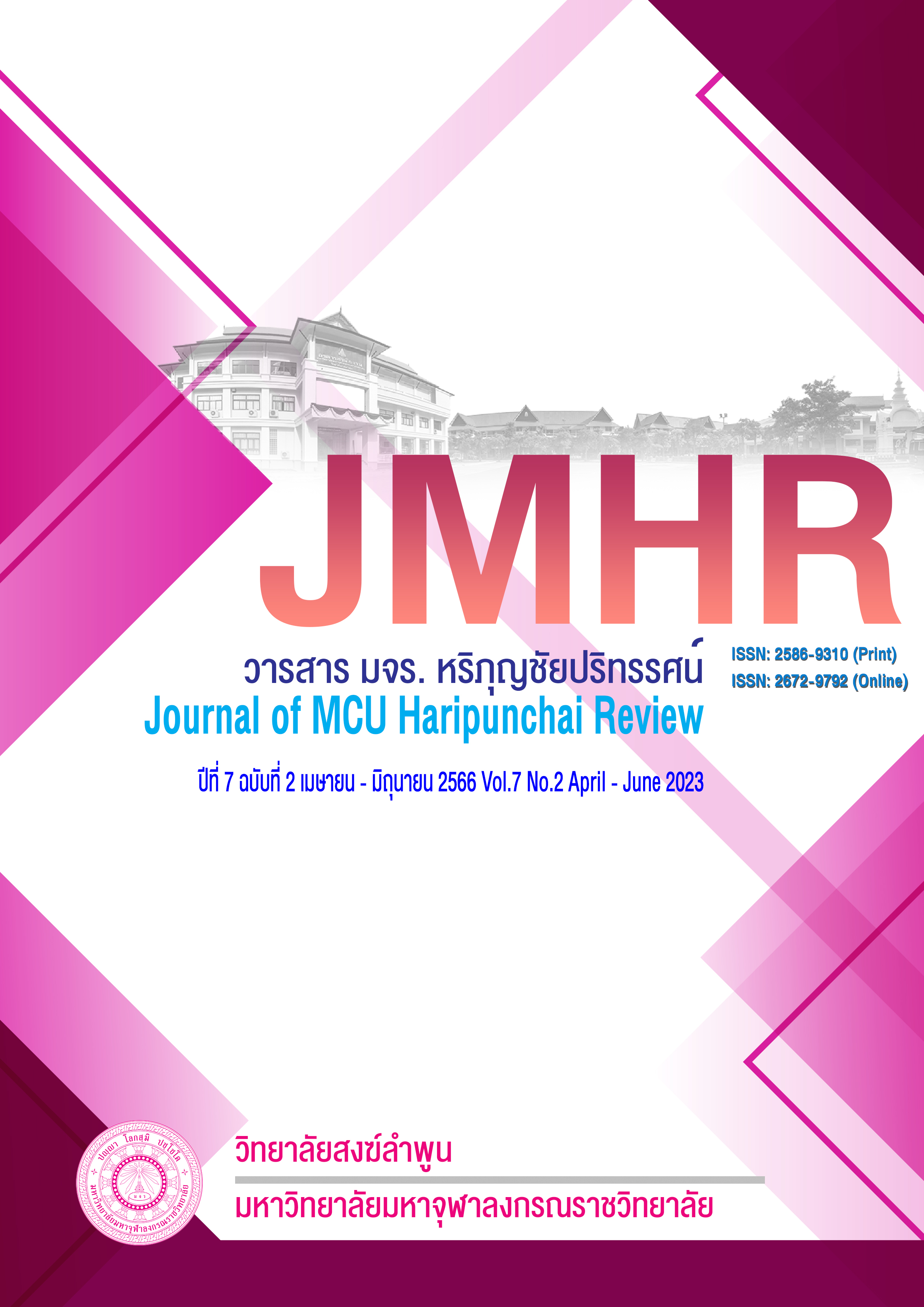Animism in Thai Society
Main Article Content
Abstract
From past to present, the belief in ghosts is a belief that has always been together. However, people in Southeast Asia have adopted Buddhism and Brahmanism but have yet to abandon their original beliefs completely. It caused the development of animism. The people in Southeast Asia combination of spirits, Brahmins and Buddhism together so well that it is part of the way of life of people in Thai society. It is unable to be separated from each other. Some of the new generations see it as a matter of ignorance. Nevertheless, at the same time, some new generations have a new word called Mutelu or Pai Mu. Mutelu is to attend an animist ritual. And the flesh is still a ritual that is tied to religion. The author therefore noted that there might be changes in the language signs that want to show the superiority of the word to look better than the original call. On the other hand, it is the use of the concept of Moral High Ground to demonstrate superiority in the field of faith. Moral High Ground is a concept that demonstrates that one's self-concept is higher than another set of beliefs by comparing one's mindset as superior to other belief sets and may criticize other beliefs.
Article Details

This work is licensed under a Creative Commons Attribution-NonCommercial-NoDerivatives 4.0 International License.
References
พระธรรมปิฎก (ป.อ. ปยุตฺโต). (2543). พจนานุกรมพุทธศาสน์ ฉบับประมวลศัพท์. พิมพ์ครั้งที่ 9. กรุงเทพมหานคร : โรงพิมพ์มหาจุฬาลงกรณราชวิทยาลัย.
พระพีร์ญาภพพ์ ธารพนาลี. (2563). ศึกษาวิเคราะห์วิมานในวิมานวัตถุ. วารสารมนุษยศาสตร์ มหาวิทยาลัยนเรศวร. 17 (1), 65-72.
พระมหาชาญชัย ชุตินฺธโร. (2558). วิเคราะห์หลักพุทธธรรมในวิมานวัตถุที่มีอิทิพลต่อความเชื่อของพุทธศาสนิกชน ตำบลสวนเขื่อน อำเภอเมือง จังหวัดแพร่. วิทยานิพนธ์พุทธศาสตรมหาบัณฑิต (สาขาวิชาพระพุทธศาสนา). บัณฑิตวิทยาลัย มหาวิทยาลัยมหาจุฬาลงกรณราชวิทยาลัย.
พระมหาธรรมราชาที่ 1พญาลิไทย. (2536). ไตรภูมิกถา. พิมพ์ครั้งที่ 3. กรุงเทพมหานคร : กรมศิลปากร.
พระกฤษณุ ปญฺญาวชิโร กาแก้วมิตรมาร ภัรฑิลา น้อยเจริญ และคิด วรุณดี, (2560). ภูมิวิลาสินี : เครื่องเตือนใจให้สังคมอยุ่ในพุทธโอวาท. วารสารปัญญาปณิธาน. 2 (1), 19-37
มหาจุฬาลงกรณราชวิทยาลัย. (2535). พระไตรปิฎกภาษาไทย ฉบับมหาจุฬาลงกรณราชวิทยาลัย. กรุงเทพมหานคร: โรงพิมพ์มหาจุฬาลงกรณราชวิทยาลัย.
มหามกุฏราชวิทยาลัย. (2534). พระไตรปิฎกพร้อมอรรถกถา แปล ชุด 91 เล่ม. กรุงเทพมหานคร: โรงพิมพ์มหามกุฏราชวิทยาลัย.
มานพ รักการเรียน และพระภาวนาพิศาลเมธี วิ. (2560). การรอดพ้นอบายภูมิตามหลักพระพุทธศาสนา. วารสาร มจร บาฬีศึกษาพุทธโฆสปริทรรศน์. 3 (1), :29-48
ราชบัณฑิตยสถาน. (2542). พจนานุกรมฉบับราชบัณฑิตยสถาน พ.ศ. 2542. กรุงเทพมหานคร : นานมีบุ๊คส์พับลิเคชั่นส์.
วรรณสิทธิ ไวทยะเสวี. (2547). คู่มือการศึกษา พระอภิธรรมมัตถสังคหะ ปริจเฉทที่ 7 สมุจจยสังคหวิภาค. พิมพ์ครั้งที่ 6. กรุงเทพมหานคร: หจก. ทิพยวิสุทธิ์.
สิรีรัศมิ์ สิงห์สนธิ และพระมหายุทธนา นรเชฏโฐ. (2562). วิเคราะห์กุศลกรรมในคัมภีร์วิมานวัตถุ. วารสารพุทธมัคค์ ศูนย์วิจัยธรรมศึกษา สำนักเรียนวัดอาวะวิกสิตาราม. 6 (2), 101-111


